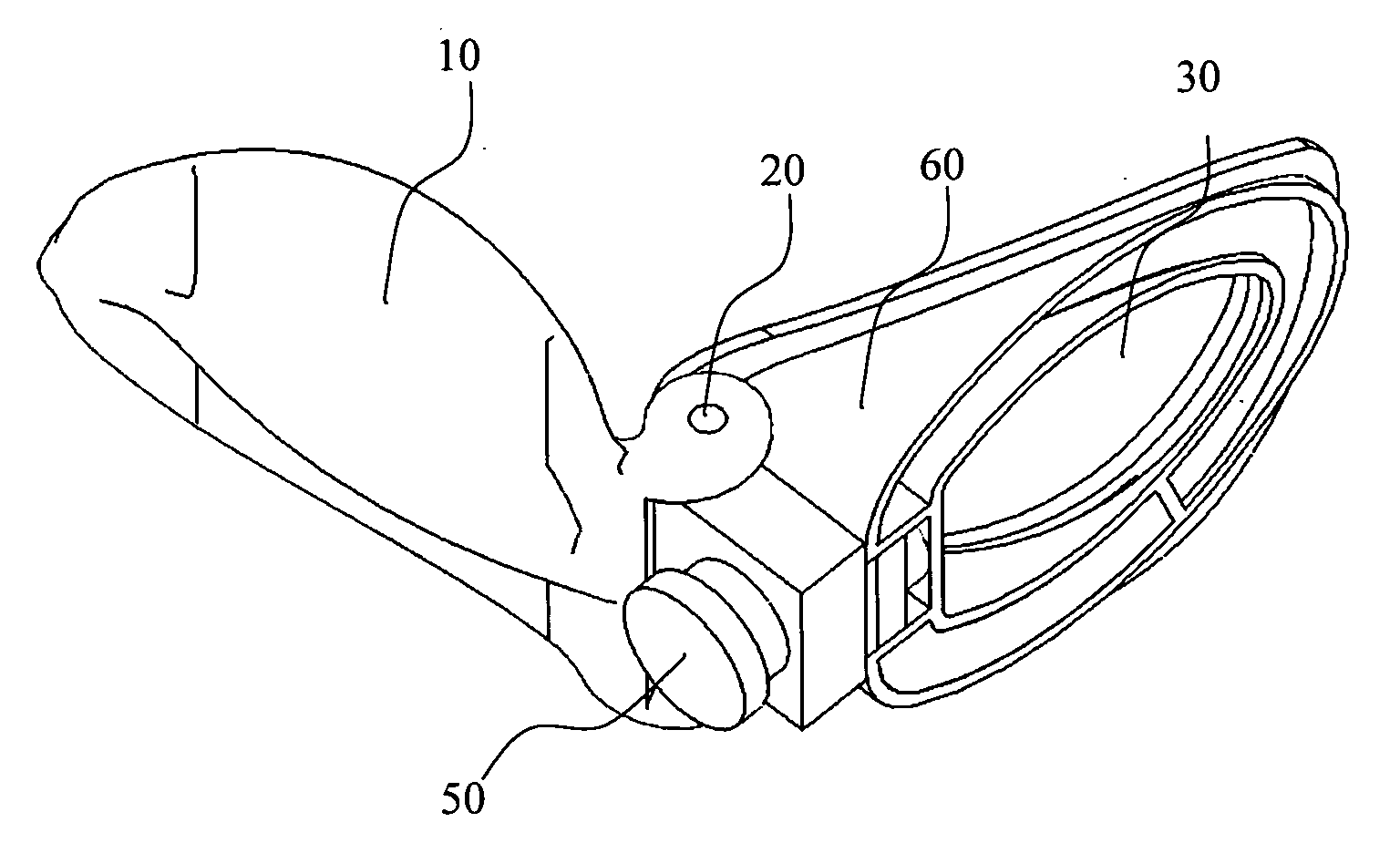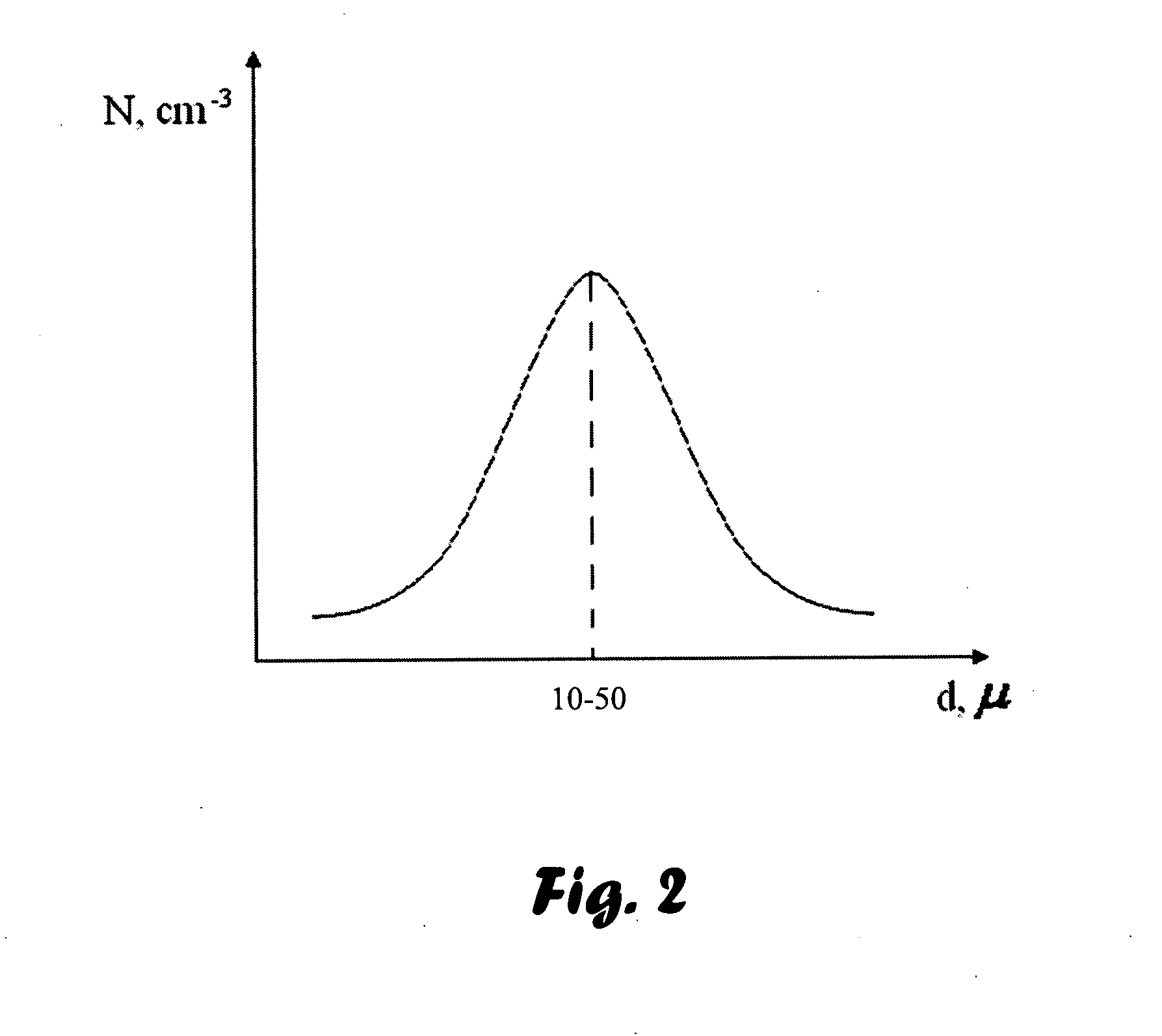Device for applying an ophthalmic medicament mist
a technology of ophthalmic medicine and mist, which is applied in the field of devices and methods for applying ophthalmic medicine mist, can solve the problems of reducing the availability of reducing the ability of the drug to be absorbed, and a large portion of the drop to be lost due to overflow from the lid margin onto the cheek, so as to achieve the effect of effective delivery of the drug to the ey
- Summary
- Abstract
- Description
- Claims
- Application Information
AI Technical Summary
Benefits of technology
Problems solved by technology
Method used
Image
Examples
second embodiment
[0112]It is acknowledged in this respect that a dispenser with two goggle-like dispensers for left and right eyes, conjugated or otherwise incorporated by a mutual single frame is possible, according to yet the invention.
[0113]Reference is now made to FIG. 2, illustrating in a not-to-scale manner a graph of droplets distribution constituting dependence of relative quantity N of droplets in μm−3 on the size d of medicament droplets. As seen in FIG. 2, maximum value of droplets quantity corresponds to droplets of 10μ size. It is known that fog or mist, as defined and presented in the present invention, is described by the Gauss distribution.
[0114]Reference is now made to FIG. 3, illustrating in a not-to-scale manner a 3-dimensional rendering of an alternative embodiment 250 of the device for applying an ophthalmic medicament. Goggle-like dispenser 250 comprises, inter alia, a lens cup 510, a protective cover 520 (a wing like member), a hinge 530, a control unit 540, a fluid reservoir ...
PUM
 Login to View More
Login to View More Abstract
Description
Claims
Application Information
 Login to View More
Login to View More - R&D
- Intellectual Property
- Life Sciences
- Materials
- Tech Scout
- Unparalleled Data Quality
- Higher Quality Content
- 60% Fewer Hallucinations
Browse by: Latest US Patents, China's latest patents, Technical Efficacy Thesaurus, Application Domain, Technology Topic, Popular Technical Reports.
© 2025 PatSnap. All rights reserved.Legal|Privacy policy|Modern Slavery Act Transparency Statement|Sitemap|About US| Contact US: help@patsnap.com



